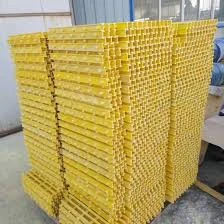
-
 Afrikaans
Afrikaans -
 Albanian
Albanian -
 Amharic
Amharic -
 Arabic
Arabic -
 Armenian
Armenian -
 Azerbaijani
Azerbaijani -
 Basque
Basque -
 Belarusian
Belarusian -
 Bengali
Bengali -
 Bosnian
Bosnian -
 Bulgarian
Bulgarian -
 Catalan
Catalan -
 Cebuano
Cebuano -
 China
China -
 China (Taiwan)
China (Taiwan) -
 Corsican
Corsican -
 Croatian
Croatian -
 Czech
Czech -
 Danish
Danish -
 Dutch
Dutch -
 English
English -
 Esperanto
Esperanto -
 Estonian
Estonian -
 Finnish
Finnish -
 French
French -
 Frisian
Frisian -
 Galician
Galician -
 Georgian
Georgian -
 German
German -
 Greek
Greek -
 Gujarati
Gujarati -
 Haitian Creole
Haitian Creole -
 hausa
hausa -
 hawaiian
hawaiian -
 Hebrew
Hebrew -
 Hindi
Hindi -
 Miao
Miao -
 Hungarian
Hungarian -
 Icelandic
Icelandic -
 igbo
igbo -
 Indonesian
Indonesian -
 irish
irish -
 Italian
Italian -
 Japanese
Japanese -
 Javanese
Javanese -
 Kannada
Kannada -
 kazakh
kazakh -
 Khmer
Khmer -
 Rwandese
Rwandese -
 Korean
Korean -
 Kurdish
Kurdish -
 Kyrgyz
Kyrgyz -
 Lao
Lao -
 Latin
Latin -
 Latvian
Latvian -
 Lithuanian
Lithuanian -
 Luxembourgish
Luxembourgish -
 Macedonian
Macedonian -
 Malgashi
Malgashi -
 Malay
Malay -
 Malayalam
Malayalam -
 Maltese
Maltese -
 Maori
Maori -
 Marathi
Marathi -
 Mongolian
Mongolian -
 Myanmar
Myanmar -
 Nepali
Nepali -
 Norwegian
Norwegian -
 Norwegian
Norwegian -
 Occitan
Occitan -
 Pashto
Pashto -
 Persian
Persian -
 Polish
Polish -
 Portuguese
Portuguese -
 Punjabi
Punjabi -
 Romanian
Romanian -
 Russian
Russian -
 Samoan
Samoan -
 Scottish Gaelic
Scottish Gaelic -
 Serbian
Serbian -
 Sesotho
Sesotho -
 Shona
Shona -
 Sindhi
Sindhi -
 Sinhala
Sinhala -
 Slovak
Slovak -
 Slovenian
Slovenian -
 Somali
Somali -
 Spanish
Spanish -
 Sundanese
Sundanese -
 Swahili
Swahili -
 Swedish
Swedish -
 Tagalog
Tagalog -
 Tajik
Tajik -
 Tamil
Tamil -
 Tatar
Tatar -
 Telugu
Telugu -
 Thai
Thai -
 Turkish
Turkish -
 Turkmen
Turkmen -
 Ukrainian
Ukrainian -
 Urdu
Urdu -
 Uighur
Uighur -
 Uzbek
Uzbek -
 Vietnamese
Vietnamese -
 Welsh
Welsh -
 Bantu
Bantu -
 Yiddish
Yiddish -
 Yoruba
Yoruba -
 Zulu
Zulu
Innovative FRP Solutions for Thermal and Nuclear Power Generation Applications
Fiber Reinforced Polymer (FRP) Products for Thermal and Nuclear Power Applications
The integration of advanced materials in the energy sector has been pivotal in enhancing the efficiency and safety of thermal and nuclear power plants. Among these materials, Fiber Reinforced Polymers (FRPs) have emerged as exceptional candidates due to their unique properties, such as high strength-to-weight ratios, resistance to corrosion, and flexibility in design. This article discusses the role of FRP products in thermal and nuclear power applications, highlighting their benefits, challenges, and future prospects.
FRP is composed of a polymer matrix reinforced with fibers, typically glass, carbon, or aramid. This combination results in composite materials that can withstand harsh environmental conditions, making them ideal for power generation industries. In thermal power plants, FRPs are primarily utilized in various components, including piping systems, cooling towers, and structural reinforcements. The corrosion resistance of FRP materials significantly reduces maintenance costs and extends the lifespan of these components, ultimately leading to more reliable and efficient plant operations.
Fiber Reinforced Polymer (FRP) Products for Thermal and Nuclear Power Applications
One of the standout applications of FRP in nuclear power plants is in the construction of containment structures. These structures are designed to withstand extreme pressure and temperature fluctuations in the event of an accident. The inherent strength of FRP materials enables these containment units to be lighter without compromising on durability. This can lead to significant savings in material costs and reduced construction timelines, enabling plants to come online faster.
frp products for thermal and nuclear power

Moreover, the non-corrosive properties of FRP make it suitable for environments exposed to harsh chemicals and radiation, which are prevalent in nuclear facilities. Traditional materials, such as steel and concrete, often face degradation over time, leading to costly repairs and potential safety hazards. The adoption of FRP products can mitigate these risks, ensuring that critical infrastructure remains intact and functional for longer periods.
However, the use of FRP products does come with challenges. One major concern is the lack of standardized testing and qualification procedures specific to nuclear applications. Regulatory bodies require robust documentation and validation of materials used in safety-critical applications, which can slow the adoption of innovative products like FRPs. There is a pressing need for rigorous testing protocols to establish the long-term performance and reliability of FRP materials in nuclear environments.
Another challenge is the high initial cost associated with FRP products compared to traditional materials. While their long-term benefits may outweigh the upfront investment, convincing stakeholders to adopt these new materials can be difficult. However, as advancements in manufacturing processes continue to improve, the cost of FRP products is expected to decline, making them more accessible for widespread use.
Looking ahead, the future of FRP products in thermal and nuclear power industries is promising. Ongoing research and development efforts aim to enhance fiberglass and carbon fiber composites, improving their mechanical properties and thermal stability. Additionally, the trend towards more sustainable energy generation methods, including the use of advanced materials, positions FRPs as a pivotal component in the evolution of power generation technologies.
In conclusion, Fiber Reinforced Polymer products represent a significant advancement in the thermal and nuclear power sectors. Their unique properties offer invaluable benefits in terms of durability, safety, and cost-effectiveness, positioning them as a key player in future energy applications. With continued research, regulatory support, and acceptance within the industry, FRPs are poised to become a standard in the infrastructure of tomorrow's power generation facilities.









